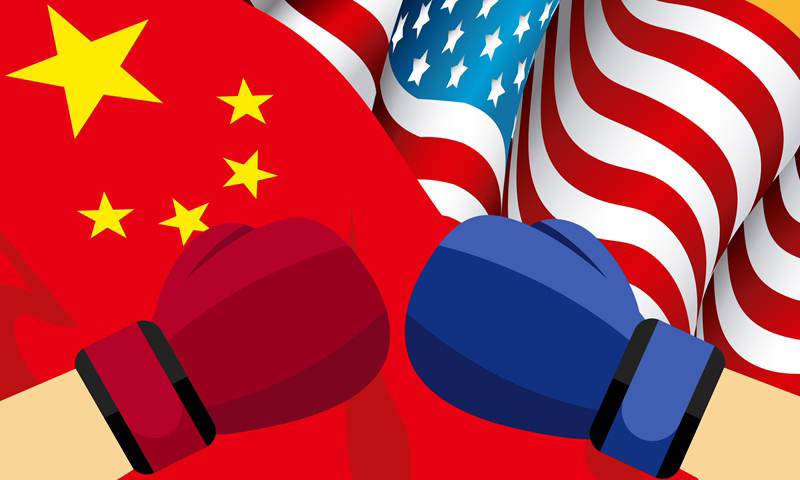What crisis management system fits China best?
By Peng Shengyu Source: Global Times Published: 2020/10/13 18:48:42

China US Photo: GT
US experts and scholars are well aware of efforts by the US government and Congress to crackdown on China.
Former US secretary of state Kissinger said at a recent virtual conference that both the US and China must establish rules of engagement for the increasingly fierce competition between the two countries, otherwise, "we will slide into a situation similar to World War I."
Despite Kissinger's serious warning, the US is trying its utmost to contain China. Clearly the US does not want to spark a war with China and spiral into a "lose-lose" situation. This mentality means that the US still has a strong desire to control the escalation of the US-China crisis and avoid any misjudgments.
If the mechanism of US-China crisis management is reached, the US suppression, containment, and exclusion of China may become more unscrupulous. There is no doubt China will need to endure more relentless pressure from the US, while the establishment of a sound mechanism to manage US-China bilateral crisis will help avoid the outbreak of armed conflicts between the two sides.
But what if such a mechanism is not reached? Without this structure, the US might worry about escalations of conflicts and misjudgment.
When it exercises all kinds of maximum pressures, it needs to bear in mind the risks. As such, any heightening of tensions between China and the US are likely to be reduced. Therefore, a mechanism for US-China bilateral crisis management is a double-edged sword, which has pros and cons for China.
Based on the analysis of the characteristics of US tactics to contain China in recent years, it can be concluded that the results are usually beneficial to China. Why? Because US attempts to target perceived Chinese weaknesses have ironically strengthened China overall.
For example, in 2019, the US-backed forces incited Hong Kong rioters to make waves by exploiting deficiencies of China's governance in Hong Kong. However, this prompted China to identify the roots of the secessionist forces and other hidden dangers in Hong Kong. The national security law for Hong Kong introduced by China this year is a remedy for the problems in Hong Kong which have grown over the past few decades.
US moves to suppress Chinese high-tech companies, including ZTE, Huawei and SMIC came as the US assumed it could hit China's reliance on US chips. These moves have backfired. This instantly propelled China to invest huge financial and material resources to solve technology dependence on the US. This will help China make breakthroughs in core technologies and push forward high-end R&D.
The US House of Representatives on September 30 issued a report that targets the Communist Party of China. The essence of the report is to instigate hostility toward the CPC from within China itself, turning the people against the Party and the government. However, this has resulted in the Party paying much more attention to the direct needs of its people and integrating with society as a whole .
If the US keeps competing with China with a vile containment strategy to assail its perceived weaknesses, there will be a greater need for China to reach a consensus with the US to develop a more robust crisis management mechanism. In this way, China can not only reap benefits to improve its weaknesses, but it can also control conflict risks or a larger war.
The author is a research fellow at the Charhar Institute in China and distinguished research fellow of International Financial Forum. opinion@globaltimes.com.cn
Posted in: VIEWPOINT